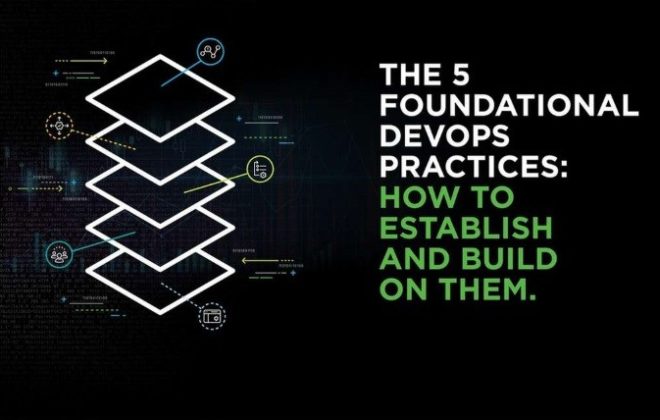Implementing DevSecOps into the Development Process
Overview of DevSecOps
DevSecOps, a portmanteau of Development, Security, and Operations, represents an evolution in the way software development and IT operations are approached. This methodology integrates security practices into every phase of the software development lifecycle (SDLC), ensuring that security is a shared responsibility among all stakeholders from the beginning. By embedding security into DevOps, DevSecOps aims to reduce vulnerabilities and enhance the overall security posture of applications.
Importance of DevSecOps in Modern Development
In today’s fast-paced digital landscape, the traditional approach of addressing security at the end of the development cycle is no longer viable. Cyber threats are becoming more sophisticated, and the costs associated with data breaches are skyrocketing. DevSecOps addresses these challenges by fostering a culture of continuous security, where security measures are automated and integrated throughout the development process. This not only enhances the security of applications but also accelerates development and deployment cycles, enabling organizations to deliver secure software faster.
II. What is DevSecOps?
Definition and Concept
DevSecOps integrates security practices within the DevOps process. This approach shifts the responsibility of security to the left, meaning it involves security early in the SDLC. By doing so, it ensures that every change to code is evaluated for security vulnerabilities, enabling rapid and secure software delivery.
Historical Context
The evolution of DevSecOps stems from the need to enhance the traditional DevOps model by embedding security. Initially, DevOps focused on bridging the gap between development and operations to accelerate software delivery. However, security was often an afterthought, leading to vulnerabilities. The realization that security must be integrated from the start led to the birth of DevSecOps.
Key Principles
The core principles of DevSecOps include:
- Automation: Automating security checks and balances throughout the SDLC.
- Collaboration: Ensuring seamless communication between development, operations, and security teams.
- Continuous Improvement: Regularly updating security practices to keep up with evolving threats.
- Shared Responsibility: Making security everyone’s responsibility, not just the security team’s.
III. Technical Specifications
Toolchain and Technologies
Implementing DevSecOps requires a robust toolchain that supports continuous integration and continuous delivery (CI/CD). Key tools include:
- Version Control Systems: Git, Bitbucket.
- CI/CD Pipelines: Jenkins, GitLab CI.
- Security Tools: SonarQube, OWASP ZAP, Snyk.
Integration with Existing Systems
Integrating DevSecOps into existing systems involves:
- Compatibility: Ensuring new tools are compatible with legacy systems.
- API Integration: Leveraging APIs to connect security tools with development and operations tools.
- Scalability: Ensuring the solution can scale with the growth of the organization.
Automation and Orchestration Tools
Automation is critical in DevSecOps. Tools like Terraform and Ansible automate infrastructure provisioning, while orchestration tools like Kubernetes manage containerized applications, ensuring security measures are applied consistently.
IV. Implementing DevSecOps
Initial Assessment
Before implementing DevSecOps, conduct a thorough assessment to understand the current security posture, identify gaps, and determine readiness.
Developing a Strategy
A successful DevSecOps strategy includes:
- Defining Objectives: Clear security goals and metrics.
- Selecting Tools: Choosing the right tools for automation, integration, and monitoring.
- Establishing Processes: Developing processes for continuous security assessment.
Building a DevSecOps Culture
Creating a culture that embraces DevSecOps involves:
- Leadership Support: Securing buy-in from leadership to prioritize security.
- Team Collaboration: Encouraging cross-functional teams to work together.
- Incentives: Rewarding teams for achieving security milestones.
Training and Education
Continuous training ensures that all team members are up-to-date with the latest security practices. This can include:
- Workshops: Hands-on training sessions.
- Certifications: Encouraging team members to obtain relevant security certifications.
- Knowledge Sharing: Regularly sharing insights and updates on security trends.
V. Applications of DevSecOps
In Different Industries
DevSecOps is applicable across various industries:
- Finance: Ensuring the security of sensitive financial data.
- Healthcare: Protecting patient information and complying with regulations.
- E-commerce: Securing online transactions and customer data.
In Various Development Environments
DevSecOps can be adapted to different development environments:
- Cloud-based: Implementing security in cloud-native applications.
- On-premises: Ensuring security in traditional data centers.
- Hybrid: Combining on-premises and cloud environments with unified security practices.
VI. Benefits of DevSecOps
Enhanced Security
By integrating security into every phase of development, DevSecOps significantly reduces vulnerabilities and enhances the overall security of applications.
Accelerated Delivery
Automating security checks ensures faster identification and resolution of issues, leading to quicker releases and updates.
Cost Efficiency
Early detection of security issues reduces the cost of remediation. DevSecOps also minimizes the risk of costly data breaches and compliance penalties.
Improved Collaboration
DevSecOps fosters a collaborative environment where development, operations, and security teams work together towards a common goal, improving overall efficiency and productivity.
VII. Challenges and Limitations
Cultural Resistance
One of the biggest challenges is resistance to change. Teams accustomed to traditional development and security practices may be hesitant to adopt DevSecOps.
Complexity and Integration Issues
Integrating new tools and processes with existing systems can be complex and may require significant effort to ensure seamless operation.
Skills Gap
There is a growing demand for professionals skilled in both development and security, leading to a skills gap that can hinder the adoption of DevSecOps.
VIII. Latest Innovations in DevSecOps
Advanced Security Tools
Innovations such as advanced threat detection and automated vulnerability scanning tools are enhancing the capabilities of DevSecOps.
AI and Machine Learning in Security
AI and machine learning are being used to predict and detect security threats, providing proactive security measures.
Container Security
With the rise of containerization, tools and practices focused on securing containerized environments are becoming increasingly important.
IX. Future Prospects
Evolving Threat Landscape
As cyber threats evolve, DevSecOps practices must continuously adapt to address new vulnerabilities and attack vectors.
Technological Advancements
Advancements in technology, such as blockchain and quantum computing, will influence the future of DevSecOps by providing new ways to secure applications.
DevSecOps Trends
Emerging trends such as zero-trust security models and serverless architectures will shape the future of DevSecOps.
X. Comparative Analysis
DevSecOps vs. Traditional Security Approaches
Traditional security approaches involve addressing security at the end of the development cycle, whereas DevSecOps integrates security throughout the SDLC, providing continuous security assessment.
DevSecOps vs. DevOps
While DevOps focuses on the integration of development and operations, DevSecOps extends this integration to include security, ensuring that security is a core component of the development process.
XI. User Guides and Tutorials
Setting Up a DevSecOps Pipeline
A step-by-step guide to setting up a DevSecOps pipeline includes:
- Selecting Tools: Choosing CI/CD and security tools.
- Configuring Pipelines: Setting up automated build, test, and deployment processes.
- Integrating Security: Incorporating security checks at every stage.
Best Practices for Continuous Security
Best practices for continuous security include:
- Automated Testing: Regular automated security testing.
- Monitoring: Continuous monitoring for threats and vulnerabilities.
- Compliance Checks: Ensuring compliance with industry standards and regulations.
Case Studies and Examples
Case studies of organizations successfully implementing DevSecOps can provide valuable insights and practical examples of best practices in action.
XII. Conclusion
Recap of Key Points
DevSecOps represents a crucial evolution in software development, integrating security practices into the SDLC. It enhances security, accelerates delivery, and improves collaboration, making it an essential approach for modern development.
Future Implications of DevSecOps
As technology and cyber threats continue to evolve, DevSecOps will play a pivotal role in ensuring the security of applications. Organizations that adopt DevSecOps will be better positioned to respond to these changes and maintain a strong security posture.
Related Posts
Leave a Reply Cancel reply
Service
Categories
- DEVELOPMENT (98)
- DEVOPS (50)
- FRAMEWORKS (20)
- IT (23)
- QA (14)
- SECURITY (13)
- SOFTWARE (13)
- UI/UX (6)
- Uncategorized (7)




